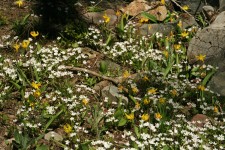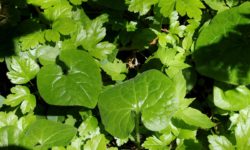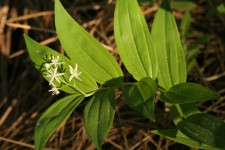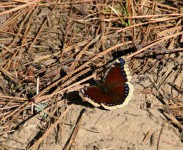Oh, the first wildflower of spring is exciting! I always watch a certain spot in the woods where the trilliums seem to emerge first. Trilliums are one of the first spring wildflowers, hence the nickname “wake robin”, but they aren’t the fastest growing flower.
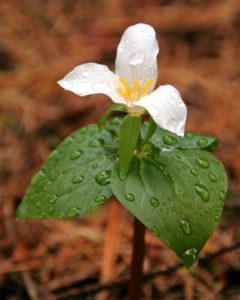
The western white trillium (Trillium ovatum var. ovatum) starts blooming in late April at lower elevations and continues into June in the mountains. Trilliums are perennials and long-lived ones too–one trillium in Oregon was recorded to be 72 years old!
Trillium is derived from Latin for triple and everything on the plant is in threes except for the stem–petals, leaves, sepals and stigmas.
However, trilliums don’t actually have leaves. What we see as a stem with leaves is actually a flowering scape (a scape is a long, leafless flower stalk coming directly from the root). While the “leaves” resemble a typical leaf and can structurally perform photosynthesis, they are technically bracts (a modified leaf) beneath the flower. For simplicity though, I’ll still refer to them as leaves and stems.
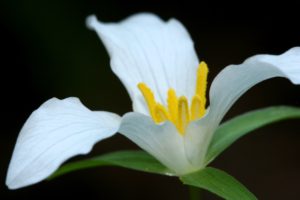
Have you noticed short trilliums and tall trilliums? The difference reveals the age of the trillium and trilliums are definitely not fast growing. The seed can take two years to germinate into a single-leaf plant which persists for a few years. Then as a juvenile, the plant grows three leaves. At maturity a trillium can stand nearly 20 inches tall.
While the crisp-white petals atop a whorl of three leaves may be tempting to pick, please don’t! Trilliums take an amazing 18 years to bear the first flower! And then they don’t always bloom every year.
Being one of the first wildflowers in spring, they are important food sources for insects such as beetles and bees. Interestingly, trilliums let insects know when the flower is past its pollination stage by turning the petals a pinkish-purple or rose color.
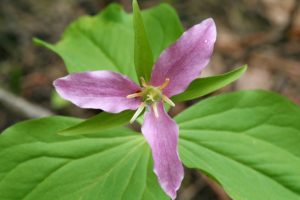
Then deer and ants help disperse the seeds. Deer eat the seed-containing fruit. Ants haul the brown seeds back to their nest and eat the yellow, fleshy extension (called elaiosome) that is fatty and protein-rich. The seeds are discarded and will germinate to begin the long life cycle again.
While trilliums are one of the earliest bloomers in the woods each year, they definitely are a late bloomer considering the first flower takes 18 years.

